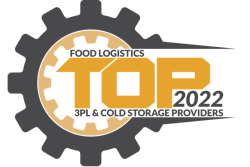
Many companies are working hard toward their sustainability goals. Still, they are struggling to make the impact they are hoping to achieve in the expected timeframe. With nearly one-third of the U.S.’s greenhouse gas emissions coming from transportation, it seems natural to start the focus here.
The industry’s first inclination is to refresh fleets with electric vehicles, but for Class 8 trucks, there are manufacturing delays and infrastructure issues. It has been and will continue to be a slow process. ACT Research predicts there will only be 317,000 electric Class 4-8 vehicles by 2040.
So, how do we start making change today? Look at the aerodynamics of your fleet.
Aerodynamics is the way air moves around things and drag is the force that slows it down. The more drag, the less fuel-efficient trucks become. Drag is created along multiple points of the truck and trailer, including the front of the truck, the gap between the trailer and the tractor, the sides and underbody of the trailer and the back of the trailer. The smoother the airflow around those points, the lower the drag. Reducing drag not only increases fuel efficiency, but it also has a direct impact on carbon emissions. According to the EPA, each gallon of diesel consumed releases approximately 22.5 pounds of CO2 into the atmosphere.
Aerodynamic technology can be incredibly impactful to fleets. It is a relatively low-dollar upgrade that has a big return on miles per gallon (MPG), and in turn, can save fleets millions in fuel and carbon emissions. Adding aerodynamic options are well proven and build on the truck you know and love today.
Since most refrigerated loads are considered middle-mile and are performed by day cabs that drive 80%-plus of their miles on the highway, there is room for improvement to make more efficient. The North American Council for Freight Efficiency (NACFE) suggests that the “greatest opportunity [for improving fuel efficiency] in terms of miles driven and resultant fuel use is with the on-highway van trailer segment, both day cabs and long, high-roof sleepers. There is, however, a long-standing misperception in the trucking industry that improved aerodynamics will only save fuel at speeds above 55 mph. Due to this, day cabs and other duty cycles have lagged long-haul sleepers in their aerodynamic performance improvements. But in reality, aerodynamic drag is acting against the vehicle at all speeds above 0 mph.”
Industry reports indicate that using multiple devices to reduce aerodynamic drag can reduce fuel consumption by more than 12%. These aerodynamic technologies address items like closing the tractor-to-trailer gap, matching the tractor and trailer heights and minimizing trailer/underbody and wheel drag.
When spec’ing tractors for aerodynamic devices to make your fleet more fuel efficient and reduce carbon footprint, look at these areas first.
Match tractor and trailer heights. “Tractor and trailer heights should be matched for as many miles driven as possible as the fuel economy reduction from mismatched heights is more than 10%,” according to NACFE. This means for fleets running dry vans and reefers, order a full aerodynamic roof fairing to improve MPG up to 5% against a standard roof deflector. This continues to be a great area for improvement, especially amongst reefer fleets.
Close the gap between tractor and trailer. Fleets should order standard cab fairings and look to technologies to fully close the gap without compromising the low-speed maneuverability.
Minimize trailer and wheel drag. While the payoff can be longer with trailer devices because many fleets have multiple trailers for each tractor, making it more difficult to implement across an entire fleet it is worth pricing out. Trailer skirts not only reduce fuel consumption, but also improve trailer stability. Wheel drag can be reduced at both the tractor and trailer.
Work with your dealer to maximize the aerodynamic offerings from the manufacturer. Don’t forget to look at well-vetted aftermarket product offerings as well, which can be installed at modification centers before delivery or retrofitted on in-service units. Work with your dealer to ensure any product selected suits the demands of the fleet’s full range of operations.
With minimal costs and downtime, you can start reducing carbon emissions and save your company money in the long run by reducing fuel consumption. For every 100,000 miles driven, with a 4% savings in diesel, you would save up to 20,000 pounds of CO2. That is equivalent to taking two passenger cars off the road. When applied to a fleet of Class 8 trucks, this could mean millions of pounds of CO2 and millions of dollars in fuel savings. Investing in emissions-reducing technologies not only makes your customers happy, but also drives your bottom line.



















